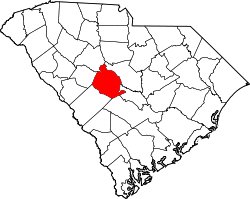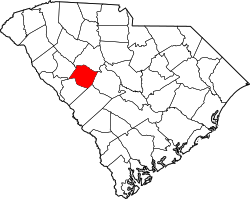Batesburg-Leesville, South Carolina | |
|---|---|
| Nicknames: B-L, BB-LV, The Twin Cities | |
 Location of Batesburg-Leesville within South Carolina. | |
| Coordinates: 33°55′05″N81°30′48″W / 33.91806°N 81.51333°W [1] | |
| Country | United States |
| State | South Carolina |
| Counties | Lexington, Saluda |
| Government | |
| • Mayor | Lancer Shull |
| Area | |
• Total | 8.29 sq mi (21.48 km2) |
| • Land | 8.20 sq mi (21.23 km2) |
| • Water | 0.10 sq mi (0.26 km2) |
| Elevation | 653 ft (199 m) |
| Population | |
• Total | 5,270 |
| • Density | 643.0/sq mi (248.28/km2) |
| [4] | |
| Time zone | UTC−5 (EST) |
| • Summer (DST) | UTC−4 (EDT) |
| ZIP codes | 29006, 29070 |
| Area codes | 803, 839 |
| FIPS code | 45-04300 [5] |
| GNIS feature ID | 1253572 [1] |
| Website | www |
Batesburg-Leesville is a town located in Lexington and Saluda counties, South Carolina, United States. The town's population was 5,362 as of the 2010 census [4] and an estimated 5,415 in 2019. [6]
Contents
- History
- Woodard incident
- Law and government
- Mayor
- Town council
- Administration
- Fire department
- Economy
- Top employers
- Poultry industry
- Poultry festival
- Education
- Public schools
- Historic public schools
- Private schools
- Colleges and universities
- Historic colleges
- Library
- Media
- Newspapers
- Radio
- Television
- Geography
- Climate
- Demographics
- 2020 census
- 2000 census
- Notable people
- Athletes
- Musicians
- Governmental and Military
- References
- External links









